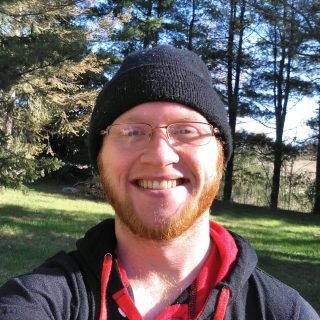“Have you ever done a XBT cast?” John Fulmer asks. I have not, but I am excited to learn about another device used for deep-water oceanography.
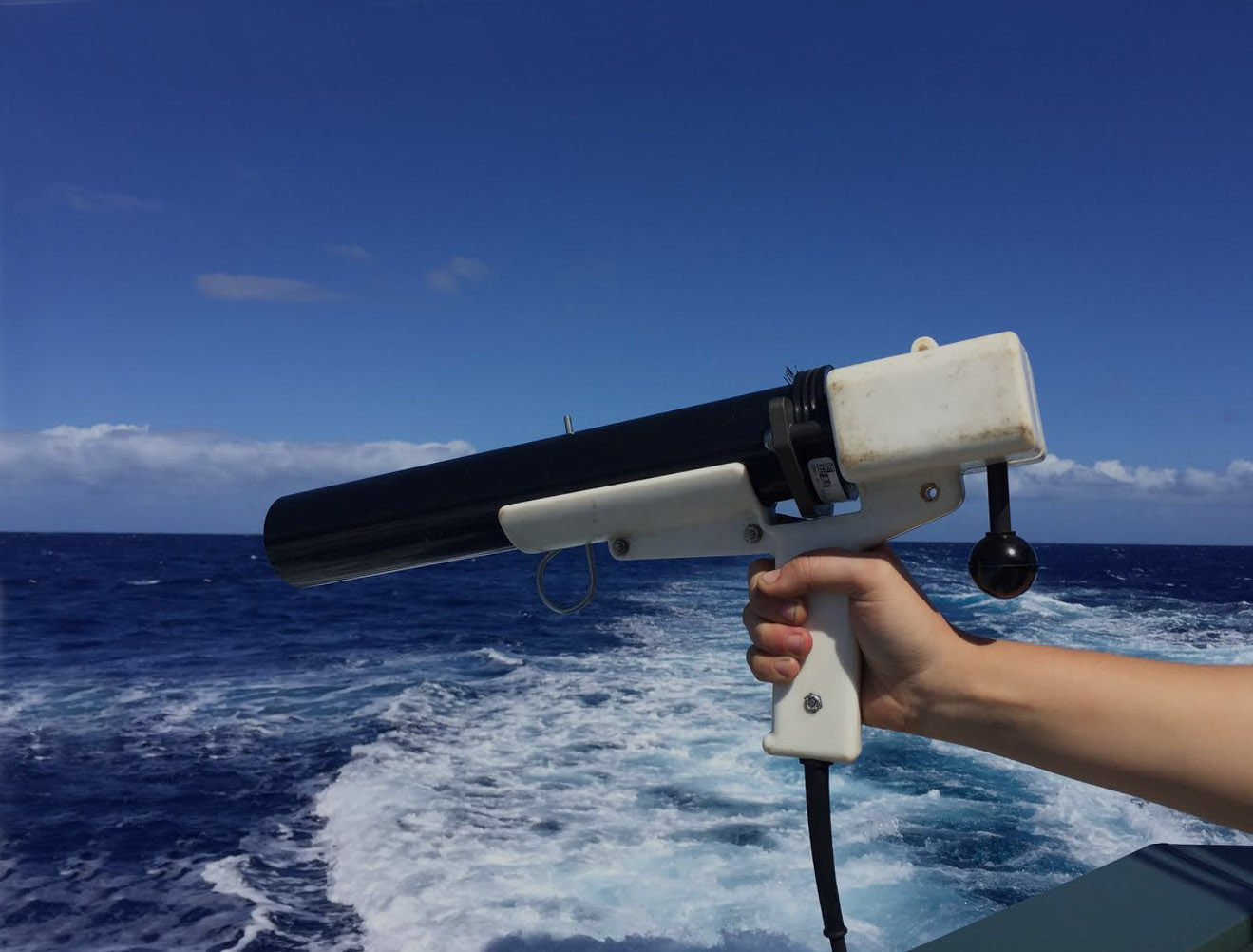
He hands me a cylindrical tube fastened in a holder that looks a bit like a caulk gun. At the point of the cylinder is a small pin that keeps the weight from falling out until it is pointed over the side of the vessel. John instructs me to pull the pin, and with that, the weight falls freely into the passing waves, instantly collecting temperature data with depth. My job is to make sure the line doesn’t bump against the side of the vessel. If the line catches the hull, it would incur some thermal corruption in the data stream and have a cascade effect when the data is used to determine a sound velocity profile (SVP).
As the line reaches a depth of 800 meters, John tells me to simply pinch the line in between my fingers, which will cause it to snap. This seems a bit strange, but John assures me this is a regulated procedure and the line is environmentally friendly. We take a brief look at the temperature data and begin to discuss how it can be used in tandem with a salinity/conductivity profile to come up with an SVP.
The XBT (Bathythermograph) is just the first of many deep-water oceanographic tools I will be introduced to. The next day, our team begins deploying CTD (Conductivity, Temperature, Depth) casts. There are two CTD instruments we use onboard. One small towable CTD and another larger Rosette CTD with Niskin bottles that allow for sampling at depth. These casts are made throughout the day and night, and I have volunteered for the night shift.
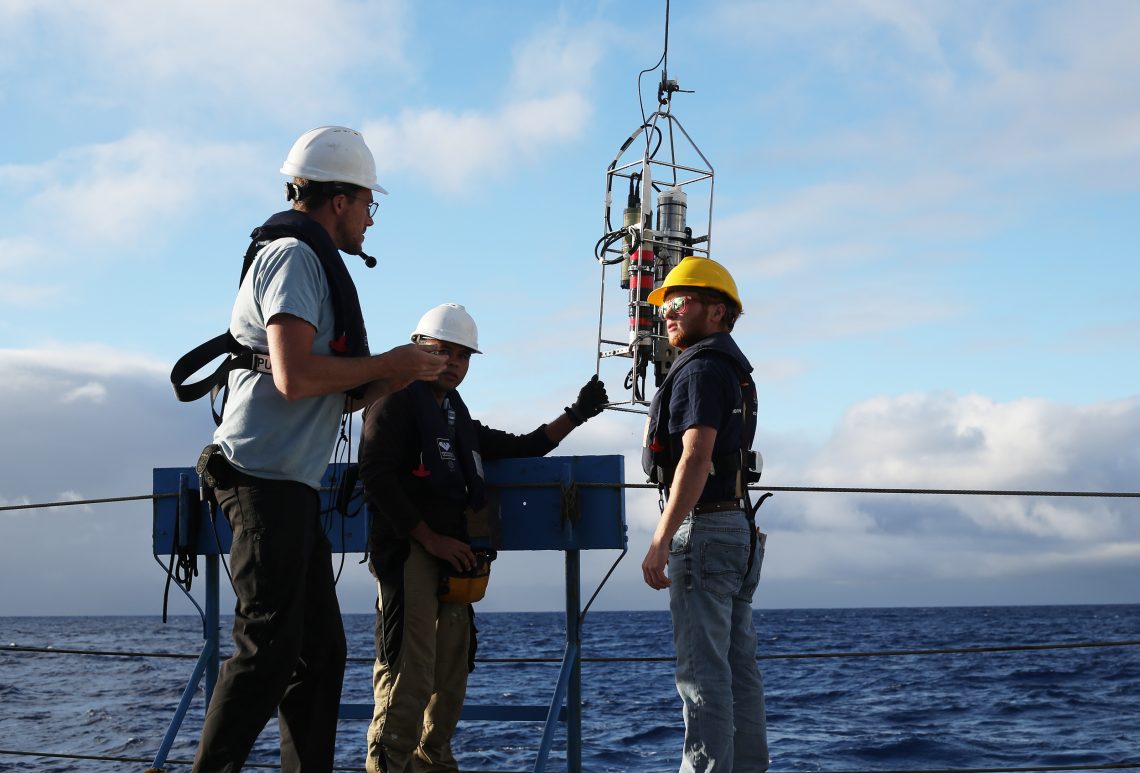
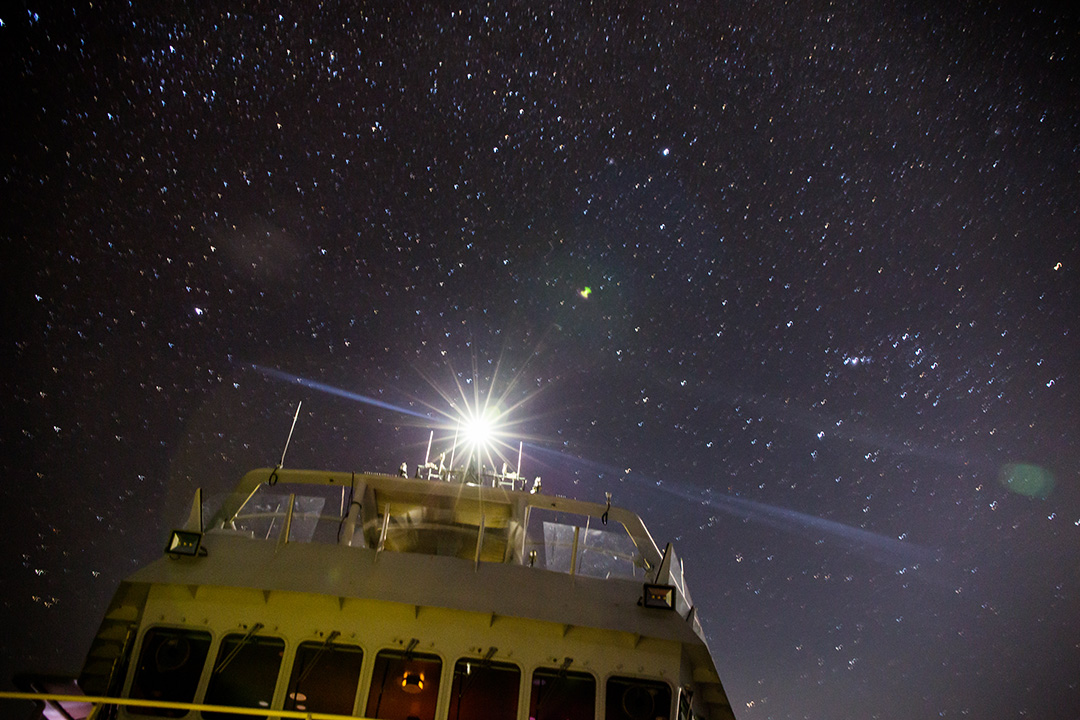
I am excited to experience the ocean at night. Scanning the infinite darkness and listening to the subtle sound of light waves crashing against the ship calms my mind. While the night shift is long and tiring, it offers a great opportunity to bond with some of my teammates. Now that the day has died down, there is more time for the marine technicians to offer me one-on-one instruction on various pieces of equipment and software.
By the time the sun rises, I am exhausted. But my exhaustion is accompanied by joy that comes from learning the ins-and-outs of these instruments.
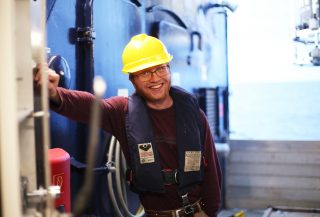
After gulping down some breakfast, I finally head to bed just before 9 am, happy that I have contributed to the team, and grateful that each day on the R/V Falkor brings so many hands-on learning experiences.
